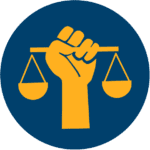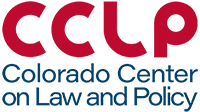Support HB21-1198
HB21-1198: Health-care Billing Requirements For Indigent Patients seeks to prohibit some of the cruelest practices of medical debt collection, breaking the cycle of debt-driven poverty and enabling more Coloradans to take part in the economy.
HB21-1198 will prevent overcharging of low-income patients, ensure hospitals screen patients for assistance, prohibit collection actions unless hospital providers take steps to protect patients, and ensure all patients have access to information about their rights in their primary language.
CCLP urges the passing of this bill and we hope you’ll join us.
Thank you to Representative Iman Jodeh, Senator Janet Buckner and Senator Chris Kolker for sponsoring this important legislation.
How HB21-1198 benefits Coloradans
Read more about how HB21-1198 repairs Colorado’s existing Hospital Financial Assistance Law below.
The case for HB21-1198
Coloradans have been at the mercy of skyrocketing hospital and ER prices for a decade. Billing practices leave Coloradans in the dark about what they are paying for and when public health coverage or legally-required discounts are available.
At CCLP we believe every Coloradan should be able to access necessary hospital care without being pushed into crushing debt. Colorado hospitals are experiencing record profits, yet fifteen percent of Coloradans have medical debt in collections. That number increases to 1 in 4 Coloradans from communities of color, a disproportionate harm resulting from racist policies and practices, and compounding the cycle of poverty for generations to come.
No Coloradan should suffer financial ruin because they or a loved one received critical care for illness or injury. High medical debt can have long-term consequences, ruining credit, and fostering poverty. More broadly, Colorado’s recovery from the pandemic and its economic consequences is jeopardized when Coloradans are forced to avoid care or take on unmanageable debt due to cost.
Why is this bill so important?
- Payment history is one of the most important factors in determining credit scores. As a result, unaffordable medical bills that go unpaid can make it more difficult—and expensive—to purchase a home, rent an apartment, buy a car, or get a credit card.
- The disproportionate debt burden experienced by communities of color is the result of racist policies and practices that have concentrated financial distress and higher uninsured rates in Black and Brown communities. That debt burden further restricts communities of color from fully participating in Colorado’s economy.
- When denied more affordable forms of credit, too many Coloradans are forced to rely upon high-cost loan products known for their predatory interest rates and fees, negatively impacting generational wealth and well-being.
How HB21-1198 repairs Colorado’s Hospital Financial Assistance Law
Sets an enforceable standard for discounted care
Uninsured low-income Coloradans will get a discount pegged to an established rate and monthly payments will be limited so low-income families can better manage their medical debt.
Ensures hospital providers screen patients that want assistance for public coverage and discounts
Providers will have to connect patients to the public coverage or discounted care options they qualify for but may not know about.
Prohibits collection actions unless providers take steps to protect patients
Providers will not be able to send patient debt to collections unless they screen interested patients for assistance, offer a fair payment plan, and provide critical information about the collection action.
Ensures all patients have access to information about their rights in their primary language
Providers will have to make information about patient rights to screening, discounted care, payment plans, and protections against collections available to their community in commonly spoken languages and to each patient in their primary language.
Provides for better enforcement of patient rights
Providers will have to report disaggregated data regarding their financial assistance activity to HCPF and HCPF will be required to draft regulations and establish a complaint process to aid in enforcement.
Additional Questions and Answers
What makes HB21-1198 different from other hospital billing legislation?
Colorado passed legislation with similar components in 2012. HB21-1198 moves those components from CDPHE oversight to HCPF oversight, to improve enforcement and better align similar programs. Since we are moving the provisions from Title 25 (CDPHE’s jurisdiction) to Title 25.5 (HCPF’s jurisdiction), we are taking the opportunity to make critical improvements to the law to simplify the hospital billing process for patients, and help ensure Coloradans have access to care without crushing debt.
Why move regulation of hospital billing and collections practices to HCPF?
Hospitals and hospital providers routinely send patients to collections without having screened them for financial assistance and without providing reduced rates when required. HCPF has the expertise needed to improve enforcement of patient rights. CDPHE indicates that they are not the appropriate agency for this type of “financial” regulation of hospitals. Subsequently, for the past eight years, they never took steps to pass the regulations needed for enforcement. On the other hand, HCPF oversees similar programs such as hospital community benefit and the Colorado Indigent Care Program. HB21-1198 would help align state programs that provide discounted hospital care.
Why require screening?
In 2016 an estimated 115,000 Coloradans were eligible for Medicaid or CHP+ but not enrolled and policies implemented since then have had the effect of depressing enrollment further, especially among eligible immigrants and their eligible family members. Beyond helping with immediate medical expenses, connecting people to the comprehensive coverage options they qualify for promotes health and financial well-being. For people with low incomes, just having health insurance reduces rates of depression, eviction and bankruptcy. And kids in families with low incomes, who have publicly-financed coverage, are more likely to finish high school, graduate from college and have higher incomes as adults. Connecting uninsured people to public coverage benefits hospitals too, since public coverage programs pay significantly higher rates than the 26 cents on the dollar that hospitals typically get from people who pay out-of-pocket (see CHASE report page 25). Without consistent screening of uninsured patients, Coloradans are often sent to collections for unaffordable bills when they should have had access to coverage. Finally, screening for discounts is an important safety net for our most marginalized neighbors who are excluded from public coverage.
How will the screening requirements impact administrative burden for hospitals?
Under current law, hospitals should already be screening uninsured patients for financial assistance. If the bill passes, hospitals will have to screen for both financial assistance and public coverage. But consistent screening will benefit hospitals too, because public coverage programs pay significantly higher rates than the 26 cents on the dollar that hospitals typically get from people who pay out-of-pocket (see CHASE report page 25). In addition, some of the administrative burden of completing screening for financial assistance and CICP will be reduced because the bill mandates that HCPF create a uniform application that all hospitals will use.
Why provide financial assistance to people with insurance?
With the proliferation of high deductible health plans, more Coloradans are struggling to pay their hospital and emergency room bills, despite having health insurance. In 2019, over $60 million in bad debt written off by hospitals was for care provided to insured patients (see Hospital Expenditure Report page 15). This is over three times higher than the bad debt attributed to Medicare patients and indicates that insured hospital patients are struggling to pay their deductibles and other cost-sharing.
What is the rationale for the discounted care standard?
The standard, designed with enforcement in mind, has three caps for people at or below the 250% federal poverty level: 1) hospitals can only charge 80% of the applicable Medicare rate for uninsured patients in this population, 2) hospitals must limit required monthly payments to 5% of monthly income for this population, insured or not, 3) hospitals can only collect payments from this population for a maximum of 36 months.
The standard is relatively simple and information about the elements of the standard – Medicare rates and patient income – is available to the patient. This makes the standard more enforceable. The 5% of income cap on monthly payments comes from the definition of “underinsured” developed by The Commonwealth Fund. Under that standard, an insured person is underinsured if their income is under 200 percent of the federal poverty level and if out-of-pocket costs, excluding premiums, are equal to 5 percent or more of household income. Finally, the 36-month time limit was included to ensure that the lowest-income hospital patients are not struggling to pay down crippling health care debt beyond three years.
Why provide for a private right of action?
Get involved
You can play a crucial role in moving this bill forward.
-
- Contact your legislators and urge your support
- Share your support for HB21-1198 across social media
- Sign on your organization as an official supporter of the bill
Supporters of hospital and emergency room billing reform
9to5 Colorado
AARP Colorado
All Families Deserve a chance Coalition
Bell Policy Center
Center for Health Progress
Chronic Care Collaborative
Clayton Early Learning
Colorado Center on Law and Policy
Colorado Children’s Campaign
Colorado Coalition for the Homeless
Colorado Consumer Health Initiative
Colorado Cross-Disability Coalition
Colorado Fiscal Institute
Colorado Organization for Latina Opportunity and Reproductive Rights (COLOR)
Colorado Social Legislation Committee
El Grupo Vida
Family Voices Colorado
Raise Coalition
Spring Institute for Intercultural Learning
Summit Family & Intercultural Resource Center
The Consortium
Towards Justice
Women’s Lobby of Colorado





